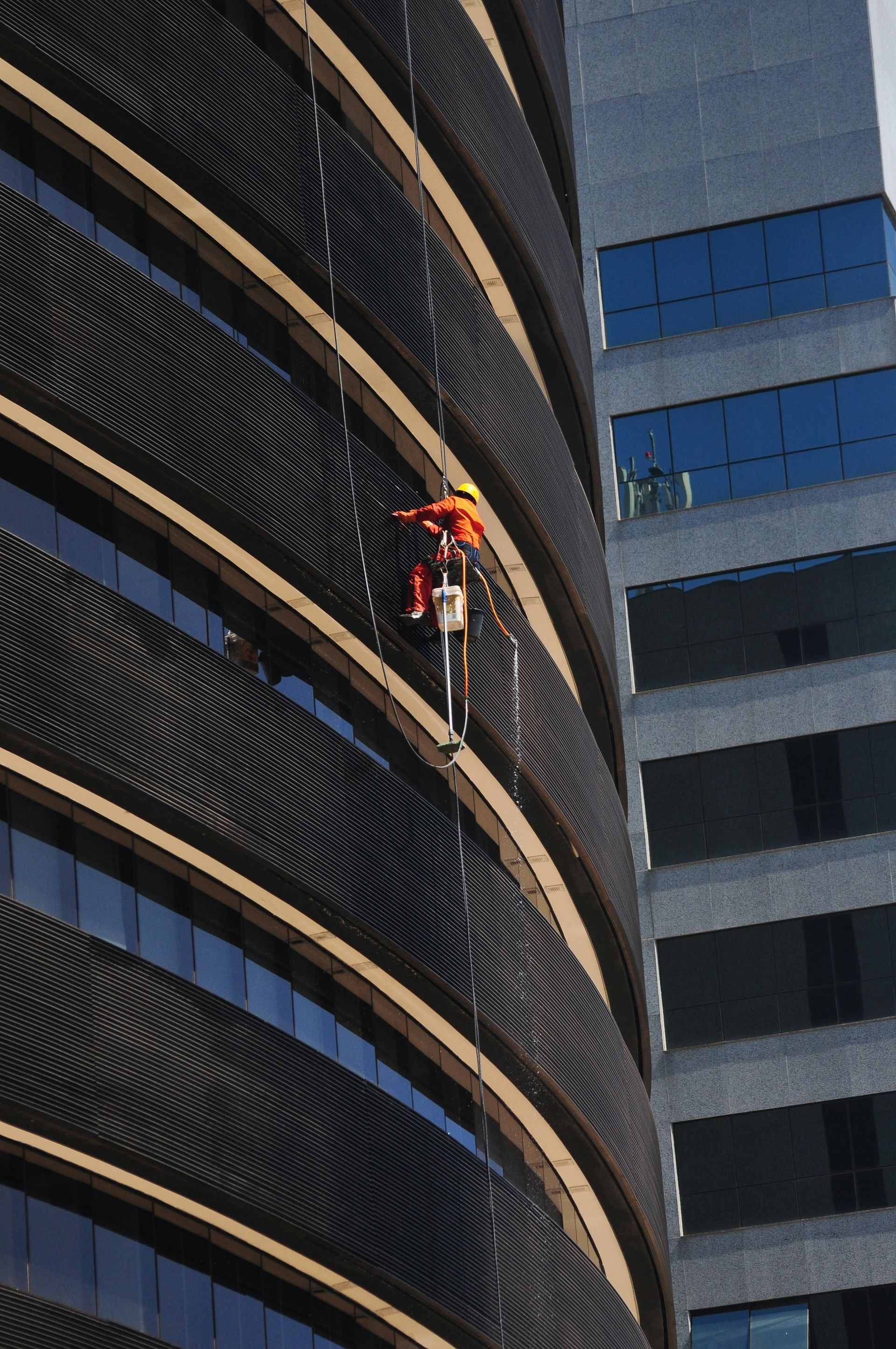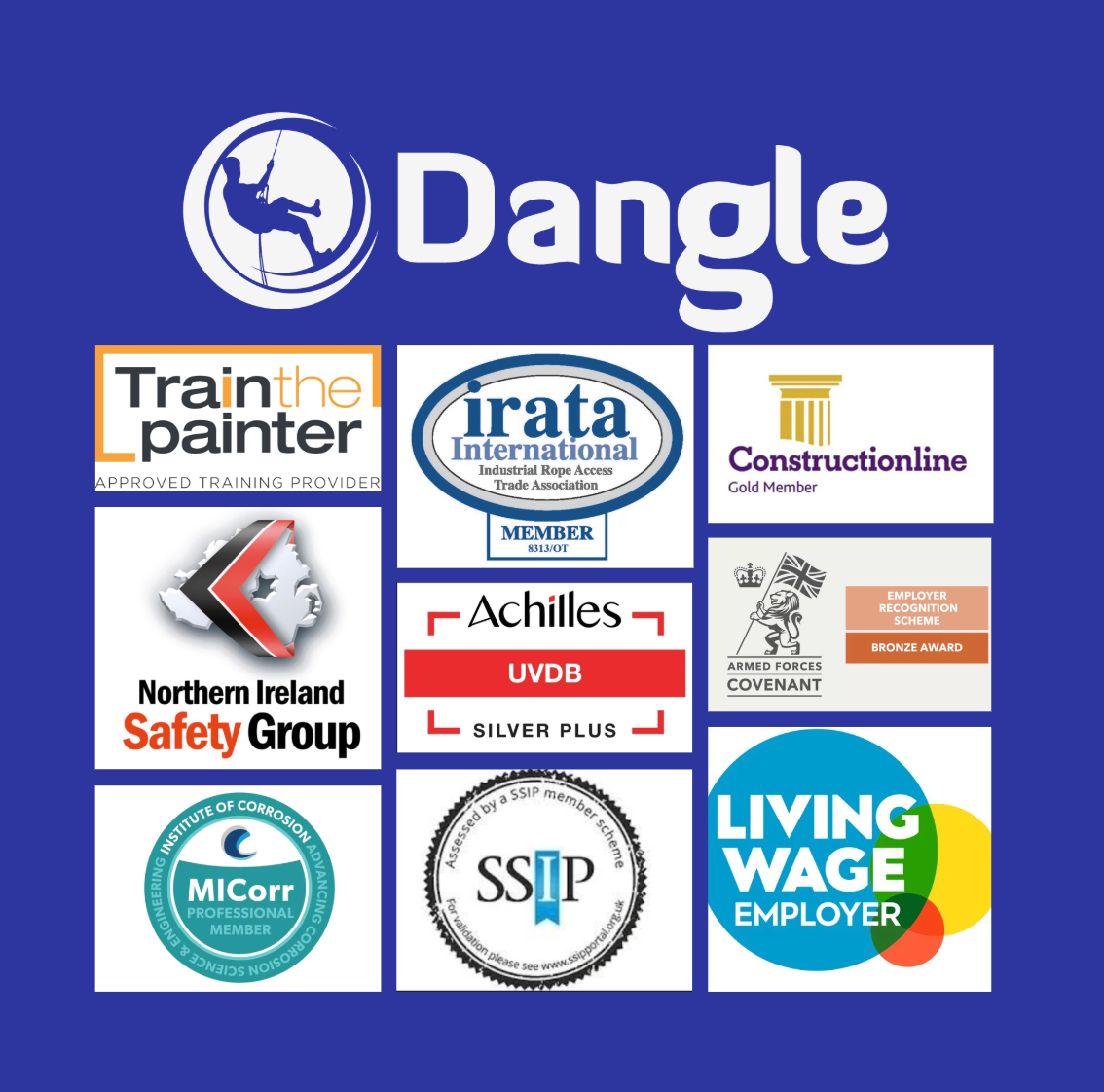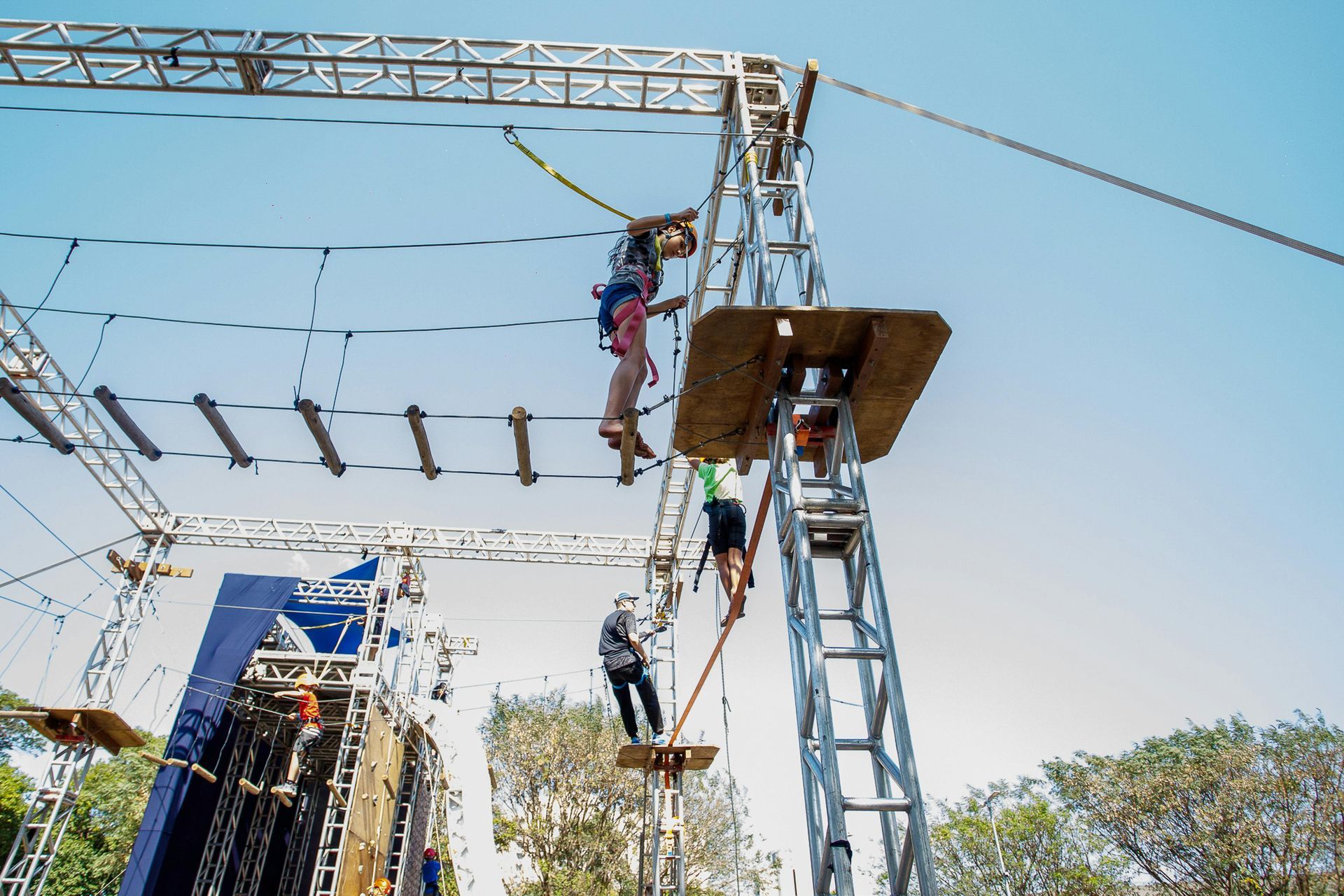Rope Rescue Training: Techniques, Equipment, and Safety Standards Explained

Rope Rescue Training: Techniques, Equipment, and Safety Standards Explained
Working at height presents one of the most complex risk profiles in modern industry. Even with meticulous planning, incidents such as equipment malfunction, medical emergencies, or human error can leave a worker suspended, injured, or stranded. When this happens, the ability to respond quickly and effectively determines not only the outcome for the casualty but the safety of everyone on site.
Rope rescue training develops the technical competence required to perform these rescues safely. It teaches rescuers how to build secure rope systems, assess anchor integrity, and coordinate recoveries using physics-based techniques. Importantly, it aligns with the Work at Height Regulations 2005, which require that every employer provide a “rescue plan for emergencies and rescue” rather than relying solely on public emergency services.
This training underpins operations across industries — from offshore oil platforms and wind turbines to telecommunications towers and construction sites — where vertical movement, restricted access, and suspended loads are routine.
What Is Rope Rescue Training?
In essence, rope rescue training is the study and practice of using rope access rescue systems to safely recover a person from height or depth when standard evacuation methods are impossible. It combines mechanical understanding, procedural planning, and teamwork into a single operational discipline.
Trainees learn how to:
- Assess anchor points and loads — applying mechanical principles of tension, compression, and vector forces.
- Construct and test rescue systems such as twin-rope setups, counterbalance hauls, and lowering systems.
- Manage casualty care including suspension trauma awareness and stretcher packaging.
- Operate within legal and ethical frameworks, ensuring all actions comply with the Health and Safety at Work (Northern Ireland) Order 1978 and associated PPE Regulations (NI) 2002.
Training also emphasises documentation — rescue plans, equipment logs, and dynamic risk assessments — aligning with best-practice guidance found in BS 7985:2013 – Code of Practice for Rope Access Methods and ISO 22846-2:2012.
By combining these legal, procedural, and technical elements, rope rescue training ensures that both employers and technicians meet their duty of care obligations under UK law while developing the real-world competence needed for emergency response.
The Principles Behind Rope Access Rescue Training
Behind every safe rope access rescue lies a foundation of engineering logic and human decision-making. Training introduces the following principles early, because they form the mental framework rescuers rely on when working under pressure.
- Redundancy and Load Sharing
All rescue systems must be built with redundancy — meaning that no single point of failure can result in a fall. Anchors are often load-shared between multiple points, with rope forces analysed using vector geometry to prevent over-loading. Concepts such as “critical angle” and “factor of safety” are explored in detail. - Controlled Movement
Rope rescue relies on predictable motion. Friction management devices, such as descenders and pulleys rated to EN 341 and EN 12278, enable smooth load transfer while protecting rope integrity. - Human Factors and Communication
Even the best system fails without coordination. Trainees practise command protocols, line checks, and pre-rescue briefings — echoing guidance found in the IRATA International Code of Practice, which standardises terminology and safety communication worldwide. - Risk Awareness and Continuous Assessment
Every rescue begins with a dynamic risk assessment. Trainees learn to recognise hazards — sharp edges, fall factors, weather — and adjust systems accordingly. This reflects the proactive approach required under the Management of Health and Safety at Work Regulations (NI) 2000, which mandate ongoing evaluation throughout any high-risk task.
Through these principles, rope rescue training turns abstract safety rules into tangible field skills, blending mechanical understanding with legal compliance and professional judgement.
Types of Rope Access Rescue
Different operational settings require tailored rescue techniques. Rope access rescue training therefore branches into distinct categories, each underpinned by the same engineering principles but adapted to environmental and logistical challenges.
Low-Angle Rope Rescue Training
Low-angle rescue applies when terrain slopes between 15–40 degrees — typical of embankments, quarries, or riverbanks. While the rope system doesn’t bear the full bodyweight of the rescuer or casualty, it stabilises movement and prevents slips.
Training focuses on:
- Rope-assisted movement on uneven ground.
- Edge safety and anchor selection on variable terrain.
- Mechanical advantage systems for gradual extraction.
This type of training often integrates with Workplace Rescue and Recovery Procedures recommended by the HSE, emphasising scene control and risk communication.
High-Angle Rope Rescue Training
High-angle rescue is used when the rope system bears 100% of the load — such as on towers, wind turbines, bridge pylons, or tall façades. These operations demand advanced rigging knowledge and precise control.
Key competencies include:
- Dual-rope systems (main and safety lines) compliant with ISO 22846-2.
- Counterbalance and cross-hauling configurations for efficient retrieval.
- Vertical casualty access and stretcher orientation.
High-angle rescue forms the foundation of most IRATA Level 2 and Level 3 training modules, where technicians demonstrate the ability to perform complex manoeuvres and system transitions.
Confined Space Rope Rescue Training
Confined space environments — such as silos, tanks, sewers, or shafts — present unique hazards: limited oxygen, toxic atmospheres, and restricted mobility. Rope rescue training for these spaces blends rope access, gas detection, and confined space entry procedures.
Trainees learn to:
- Operate within safe entry permits.
- Monitor air quality using calibrated gas detectors.
- Maintain communication with attendants outside the confined space.
- Implement vertical and horizontal extractions using mechanical hauling systems.
This training must comply with the Confined Spaces Regulations (NI) 1999, which require employers to identify hazards, provide suitable equipment, and ensure that “adequate arrangements have been made for rescue.”
Complex Rope Rescue Training
Complex or multi-system rescues simulate the realities of industrial environments — where structures, loads, and anchor points vary.
Scenarios include:
- Bridge inspection rescues involving multiple deviations.
- Cross-hauling systems on wind turbine nacelles.
- Offset stretcher transfers where direct vertical evacuation isn’t possible.
Complex rope rescue training challenges technicians to adapt dynamically while maintaining compliance with the IRATA International Code of Practice (ICOP), which defines safe system construction and supervision for multi-point rigging.
Core Techniques in Rope Rescue Training
The technical core of rope rescue training revolves around understanding rope physics, friction management, and the controlled movement of loads. Trainees apply these techniques under supervision until they can execute them efficiently and safely in any environment.
- Descent-Based Rescues
Descent-based systems are the simplest and fastest method for evacuating casualties from height. The rescuer positions above the casualty, attaches them to a controlled lowering system.
- Ascent-Based Rescues
In ascent-based rescues, the casualty is below the rescuer. The rescuer descends, connects to the casualty, and then raises both using a mechanical advantage (e.g. 3:1 or 5:1 pulley system).
These techniques allow rescuers to transition between independent rope systems — critical on large structures where anchor points differ or obstacles block a direct path.
- Pick-Off Rescues
Pick-off rescues involve direct contact between rescuer and casualty. The rescuer descends to the casualty, connects them to the same system, and controls a joint descent.
- Stretcher-Based Rescues
Where a casualty is unconscious or has spinal injuries, stretcher-based rope rescues are required. The casualty is packaged securely and lowered or hauled using a system that prevents rotation or tipping.
- Mechanical Advantage and Load Control
Every rope rescue system uses basic physics — balancing friction, leverage, and force. Training covers calculations for mechanical advantage, tension ratios, and fall factors to ensure systems remain within safe working loads.
Essential Equipment for Rope Access Rescue Systems
A rope access rescue system is only as reliable as its weakest component. Trainees are taught to select, inspect, and maintain each piece of equipment in accordance with manufacturer specifications and relevant European Norms (EN).
| Equipment | Purpose | Applicable Standard |
|---|---|---|
| Static Rope | Load-bearing lifelines with minimal elongation | EN 1891 |
| Harnesses | Support and restraint for rescuer and casualty | EN 361/ EN 813 |
| Connectors | Secure Component Linkage | EN 362 |
| Descenders | Controlled descent and lowering | EN 341 |
| Ascenders | Rope climbing and Casualty lift systems | EN 567 |
| Pulleys | Reduce friction, create mechanical advantage | EN 12278 |
| Anchors and Slings | Fixed or temporary attachment points | EN 795 |
| Stretchers and Rescue Litters | Immobilisation and safe casualty handling | EN 1865 |
Equipment familiarisation also covers inspection intervals, record-keeping, and retirement criteria as required by the Provision and Use of Work Equipment Regulations (NI) 1999 (PUWER).
Each component must be inspected before and after use, with detailed logs maintained to satisfy audit and compliance requirements.
Safety Systems and Redundancy in Rope Rescue
The safety foundation of all rope rescue systems lies in redundancy — ensuring there is always an independent backup in case of failure. Trainees study the architecture of twin-rope systems, anchor load distribution, and controlled transitions.
Main and Safety Lines
All rope rescue training reinforces the two-rope principle:
- The main line carries the working load.
- The safety line acts as a fully independent backup.
Both are connected to separate anchors capable of withstanding the combined static and dynamic loads that may occur during rescue.
Anchor Systems and Load Paths
Anchors must be redundant, equalised, and low-angle to minimise extension if one fails. Rope rescue courses introduce load-sharing anchors (e.g., the “quad anchor” or V-angle system) and explain the mathematics of force distribution — often referred to as “the vector triangle of load.”
System Integrity and Changeovers
During a rescue, loads may be transferred from one system to another — for example, from a lowering system to a hauling configuration. Rope rescue training includes the use of progress capture devices and load transfer tools to ensure the casualty remains under control throughout.
Compliance and Documentation
Under the Work at Height Regulations 2005, all employers must have a documented rescue plan detailing the systems, personnel, and equipment available for emergencies. Rope rescue training ensures individuals understand how to design, record, and implement these plans in line with regulatory expectations.
For advanced practitioners, these systems are revisited during refresher or supervisory-level training such as IRATA Level 3, where candidates must demonstrate a complete understanding of rescue system design, supervision, and incident management.
The Role of Risk Assessment in Rope Rescue Training
Every rope rescue begins with a systematic risk assessment — a legal and operational requirement under the Management of Health and Safety at Work Regulations (NI) 2000 and the Work at Height Regulations 2005.
During rope rescue training, technicians learn to identify, evaluate, and mitigate hazards before any system is built or a rope is weighted. A structured assessment includes hazard identification, consequence analysis, and contingency planning.
Rope rescue training also reinforces the hierarchy of control, connecting prevention and rescue planning within Work at Height Safety Training frameworks.
Applications of Emergency Rope Access Training in Different Industries
Rope rescue training has universal application across sectors where access or work-at-height is unavoidable.
While the techniques remain consistent, the environments — and corresponding hazards — differ dramatically.
Renewable Energy
Wind turbine technicians use rope rescue training for tower and blade evacuation. Simulated rescues in nacelles prepare technicians for emergency situations where confined spaces and long descent paths are involved.
Construction and Civil Engineering
Bridge inspectors, structural engineers, and façade maintenance teams rely on rope rescue systems for both planned work and emergency recovery in high-rise environments.
Oil, Gas, and Offshore Operations
Offshore platforms require self-contained rescue capability due to distance from shore. Rope rescue training in this context integrates confined space, hazardous atmosphere, and sea-state management considerations.
Emergency and Rescue Services
Fire and Mountain Rescue teams employ high-angle rope techniques derived from industrial standards. Many of their operational procedures mirror IRATA and ISO principles, ensuring interoperability during joint operations.
Telecommunications and Utilities
Technicians maintaining masts, pylons, and lattice towers must demonstrate rope rescue competence as part of their Lattice Tower Maintenance training framework — enabling them to self-rescue or recover colleagues at height.
The Human Factor: Decision-Making in Rope Rescue Training
While mechanical systems provide physical safety, human performance dictates operational success. Rope rescue training incorporates human factors education, focusing on decision-making, situational awareness, and communication under stress.
Rescuers learn to:
- Maintain composure in time-sensitive conditions.
- Recognise cognitive bias and fatigue as risk amplifiers.
- Use closed-loop communication, ensuring commands are repeated and confirmed.
- Conduct debriefings and learning reviews to improve future performance.
These behavioural aspects are often modelled on aviation-style Crew Resource Management (CRM) principles, promoting a culture of accountability and open communication within teams.
Team Roles and Command Structure in Rope Rescue Training
Every rope rescue is a coordinated team effort, dependent on clear structure and communication. Rope rescue training defines specific operational roles to ensure order, accountability, and safety during complex rescues.
- Rescue Supervisor: designs, authorises, and oversees the entire operation. Responsible for verifying system safety, managing resources, and briefing the team.
- Primary Rescuer: executes the rescue manoeuvre on rope, maintaining contact with the casualty and reporting conditions to the team.
- Edge Attendant: manages rope lines at transition points and prevents rope abrasion or entanglement.
- Safety Officer: monitors compliance with the rescue plan, checks anchors, and oversees PPE usage.
- Medical Responder: provides immediate first aid and coordinates post-rescue casualty care.
This hierarchy aligns closely with IRATA ICOP Section 2.9: Supervision of Rope Access Work, which mandates competent supervision and defined lines of communication for all rope access and rescue tasks.
Rope Rescue Training Standards and Guidance
Modern rope rescue practices are governed by a robust network of international standards and industry-specific codes. These frameworks define the expectations for safety, competency, and operational quality across all sectors.
Key documents include:
- ISO 22846-1 & 2:2012 – Rope access systems and principles for training and supervision.
- BS 7985:2013 – The UK’s Code of Practice for rope access, covering safe system design and supervision.
- IRATA International Code of Practice (ICOP) – The global benchmark for industrial rope access and rescue procedures.
- NFPA 1006 and 1983 Standards – Widely recognised guidance for technical rescue operations and equipment performance.
Rope rescue training courses are typically structured around these standards, ensuring that trainees achieve competence levels recognised both nationally and internationally. They form the backbone of professional training frameworks, including IRATA Level 1–3 Rope Access Courses and refresher qualifications across the energy, construction, and infrastructure sectors.
Why Choose Dangle’s Academy?
Here at Dangle, we pride ourselves on offering a wide range of professional and comprehensive inspection, access, coatings, and composite (IACC) industrial services and training courses to cater to the needs of both the private and public sectors. Our dedication to providing high-quality work at height solutions and training has helped us establish a strong reputation in the industry.
With a team of highly skilled and experienced professionals, we are committed to delivering exceptional results that not only meet but exceed our clients' expectations. Our on-site working at height services are designed to minimise maintenance costs in the long and short-term, allowing our clients to save on valuable resources.
Located in Belfast, Northern Ireland, our headquarters serve as the centre of our operations across Ireland. However, we also have a Dangle office based in Scotland, ensuring that we can extend our services to a wider clientele across the United Kingdom. No matter where you are located, our team is always ready to assist you with your industrial maintenance or training needs.
If you would like to learn more about how our dedicated team can help you, we encourage you to get in touch with us today. Our friendly and professional staff are always available to provide you with the information and support you require.


